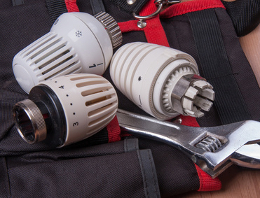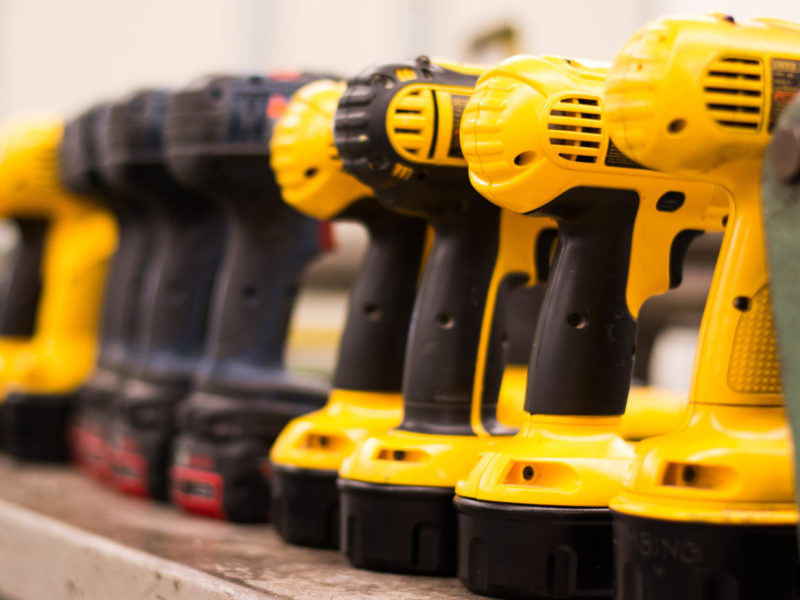Heating Spares Market Report – UK 2016-2020
Available as an Instant Download PDF
The UK market for heating spares is highly complex comprising a wide range of products. For the purposes of this report the heating spares market predominantly focuses on central heating products and includes the following product sectors in both the commercial and domestic markets and their distribution channels, focusing on; Boilers including PCBs, heat exchanger, pumps, pressure relief valves, thermostats, diverter valves, fan assembly, gas valve and solenoids, pressure switches, burner parts, hoses and nozzles.; Water Heaters including timers, switches, valves, elements, actuator motors; Consumables – including washers, gaskets, O-rings, nuts etc. Detailed market data and insight on the heating spares market by Barbour ABI, a leading UK provider of construction market intelligence.
£700.00 Exc. VAT
The 2nd edition of the ‘Heating Spares Market Report – UK 2016-2020 Analysis’ incorporates original input and primary research and represents an up-to-date and perceptive review of this substantial market. The heating spares market is highly complex, comprising a wide range of products with some of the major merchants supplying around 50,000 products. The report focuses on market size and trends, supply, distribution and future prospects, and also provides an overview of the key product groups within the UK heating market.
Key content covered:
- Market Overview – size, structure, key trends, future prospects and review of key product groups, including;
- Boilers – PCB, heat exchangers, pumps, relief valves, thermostats, diverters, pressure switches, burners, solenoids etc.
- Solid fuel – solenoid valves, thermostats, pumps, sensors etc.
- Water heaters – timers, elements, switches, valves, temperature and pressure relief valves etc.
- Consumables – washers, gaskets, O rings etc.
- Supply and distribution – main suppliers and key distribution channels.
- Key influences on the market including technological developments of boilers and other heating systems, increased cost of boiler replacement, legislation and environmental issues, the weather.
- The wide range of heating products including renewable technologies and other new technological developments are expanding the range of spares required.
- Changes in types of heating systems, such as the increasing use of combination boilers, impacting on demand for spares.
- National merchants continuing dominance of the heating spares supply chain. However, competition from internet sales is growing and some regional and local merchants have experienced higher sales growth in recent years.
- Detailed market data and insight on the heating spares market by Barbour ABI, a leading UK provider of construction market intelligence.
Some of the companies included:
ACV, Andrews Water Heaters, Ariston Thermo Group, B & Q, Baxi Heating, BHL, Biasi UK, Biddle Air Systems, Broag UK, Calpeda, City Electrical Factors, Danfoss Randall, Drayton, Edmundson Electrical, Ferroli UK, Glen Dimplex Group, Grafton Group, Grant Engineering UK, Grundfos, Hamworthy Heating, Heat and Plumb, Heatline, Honeywell UK, Ideal Stelrad Group, Johnson and Starley, Keston Heating, Kudox, Lowara UK, Myson Radiators, Pegler Yorkshire Ltd, Plumbworld, Potterton, QS Supplies, Radox Radiators, Ravenheat, Rexel Group, Saint-Gobain Group, Salus Controls UK, Schneider Electric, Screwfix Direct, Secure Controls UK, Siemens Building Technologies, Smedegaard, Strebel, Sunvic Controls, The Discount Heating Group, Travis Perkins, Vaillant Group UK, Victoria Plum, Viessmann, Vokera, Wickes, Wilo UK, Wolseley Group, Worcester Bosch Group, Zehnder.
Heating Spares Market
- Overall market size, trends and forecasts – value of the market size and forecasts from 2016 to 2020.
- Key products and suppliers – boiler manufacturers, supplier profiles and market shares.
- Imports and exports of ‘parts of boilers’ 2011-2015.
- Legislation and environmental concerns – Building Regulations, Energy Company Obligation, and smart meters.
- Renewable energy technologies – ground source and air source heat pumps, solar thermal, and biomass.
- Trends for the future and key influencing factors.
Distribution and Supply Chain
- Distribution supply chain structure illustrating the major channels in the heating spares sector.
- Assessment of the changing nature of the supply chain.
- Market mix by channel – builders and plumbers merchants, DIY multiples, heating specialists, electrical wholesalers, Internet e-tailers and others including the boiler manufacturers.
- Key companies within the relevant channels, shares, strengths and characteristics etc.
- Market shares of the national builders and plumbers merchants in the heating spares sector.
Key Product Groups in the UK Heating Market
- Domestic heating market product mix including ownership levels, product mix and product trends, major suppliers and market shares.
- Circulator pump market development and market size, product mix by type of circulator – stand-alone, boiler-integrated, key product trends – high efficiency circulators, move towards boiler-integrated etc.
- Supplier market shares, key companies, strengths and characteristics etc.
- Electrical heating products (central heating products, space heating and water heating) including product mix and product trends, major suppliers, market strengths and key characteristics, in addition to comments on distribution channels
The heating spares market is highly complex comprising a wide range of products, with some of the major merchants supplying around 50,000 products. The market achieved significant growth in 2013, due to the cold weather causing an increase in wear and tear and boosting the requirement for spare parts. However, subsequent winters have been mild and wet, which has reduced the level of wear and tear and resulted in lower demand for heating spares. Consequently, the market experienced modest growth in 2014 and 2015 at 3-4%, with similar growth expected in 2016. Factors supporting underlying demand in the spares sector includes the high level of combination boilers now installed in the UK. The level of wear and tear is relatively high on this type of boiler, and this should support underlying growth in the spares market. The growth of maintenance schemes, such as those now offered by utility companies and home emergency insurance providers, also support the repair sector and subsequently the consumables and spares market.
Other factors supporting underlying growth include lower levels of capital expenditure in some non-domestic end-use sectors, supporting a trend towards repair rather than replacement, thereby boosting the spares market. Other positive influences on the heating spares market have been the continued growth of renewable energy technologies and other technological developments, for example in the area of ‘smart’ heating controls, that have expanded the range of spares required, often into higher value product ranges. However, a negative influence on underlying market value has been intense price competition, partly created by cheap imports, and weaknesses in commodity prices. The type of heating system fitted in new buildings and upgrades to heating systems in existing buildings also impacts on spares demand, for example, the replacement of vented hot water systems with mains pressure systems.
Over 50% of heating spares are distributed by four national merchant chains. In recent years, however, smaller regional and local merchants have improved their service and ordering processes and, in some cases, have shown significantly higher growth compared to their larger competitors. A small proportion of sales are via the DIY sector, Internet retailers and electrical wholesalers, whilst other channels include the service teams of boiler manufacturers and those of companies that provide home maintenance and servicing contracts.
Short-term trends and forecasts for the heating spares market are difficult to predict, as the market is largely reliant on the weather influencing usage levels and wear and tear. However, factors supporting underlying growth include the large installed base of boilers in the UK; in particular, the large volume of combination boilers installed. In the non-domestic sector, the focus on repair is likely to be particularly strong in certain public sectors due to constraints on capital spending during the lifetime of the current Government. The level of housebuilding is expected to remain buoyant, as the Government seeks to address the problem of undersupply, and while this favours demand for new equipment rather than spares in the immediate term, the growth in the installed base of heating equipment will support demand for spares in the longer term. The type of systems installed in new dwellings will impact on the nature of future spares demand. For example, the increasing pressure on available space and smaller households will favour the development of small homes and flats. This is likely to have a positive impact on electric or gas combination boilers, which are suited to small properties.
- Contents Listing
- 1. INTRODUCTION 6
- 1.1 BACKGROUND 6
- 1.2 SOURCES OF INFORMATION 6
- 2. SUMMARY AND FUTURE PROSPECTS 8
- 2.1 SUMMARY 8
- 2.2 FUTURE PROSPECTS 9
- 3. KEY MARKET INFLUENCES AND ECONOMIC ENVIRONMENT 11
- 3.1 GDP 11
- 3.2 INFLATION & INTEREST RATES 12
- 3.3 UNEMPLOYMENT 13
- 3.4 HOUSEHOLD CONSUMPTION 13
- 3.5 HOUSING & CONSTRUCTION 14
- 3.6 STERLING 15
- 3.7 POPULATION PROFILE 15
- 3.8 HOUSING & CONSTRUCTION 16
- 3.8.1 Overall Construction 16
- 3.8.2 House Building Completions 17
- 3.8.3 Mix of House Building Completions 18
- 3.8.4 House Moving Levels 19
- 3.9 CONCLUSIONS 20
- 4. THE MARKET FOR HEATING SPARES 21
- 4.1 DEFINITION AND PRODUCT RANGE 21
- 4.2 MARKET BACKGROUND 21
- 4.3 MARKET SIZE & RECENT PERFORMANCE – HEATING SPARES 23
- 4.4 IMPORTS AND EXPORTS 24
- 4.5 FUTURE PROSPECTS & TRENDS 25
- 4.6 KEY PRODUCTS AND MANUFACTURERS 26
- 4.7 ENVIRONMENTAL & LEGISLATIVE ISSUES 30
- 4.7.1 Environmental Legislation 30
- 4.7.2 Renewable Energy Technologies 32
- 5. DISTRIBUTION SUPPLY CHAIN REVIEW 36
- 5.1 SUPPLY CHAIN STRUCTURE 36
- 5.2 KEY COMPANIES 41
- 5.2.1 Merchants 41
- 5.2.2 Regional Merchants and Heating Specialists 45
- 5.2.3 DIY Multiples 48
- 5.2.4 Electrical Wholesalers 48
- 6. HEATING AND VENTILATION PRODUCTS 51
- 6.1 HEATING & VENTILATION 51
- 6.1.1 Market Size and Trends 51
- 6.1.2 Domestic Product Mix (Boilers, Radiators, Heating Controls, Circulators) 53
- 6.2 NON-DOMESTIC & DOMESTIC VENTILATION 56
- 6.2.1 Non-Domestic Ventilation (Axial, Centrifugal, Other, MVE, MVHR, Demand Control) 57
- 6.2.2 Packaged Air Conditioning Systems (PAC) 58
- 6.2.3 Central Station Air Conditioning Plant (CSACP) 58
- 6.3 ELECTRIC HEATING PRODUCTS 59
- 6.4 CIRCULATOR PUMPS MARKET OVERVIEW 60
- 6.4.1 Market Size 60
- 6.4.2 Product Trends 60
- 6.4.3 Key Suppliers 61
- Tables & Chart
- CHART 1 UK HEATING SPARES MARKET AND FORECASTS 2010-2020 (£M AT MANUFACTURERS’ SALES PRICES) 8
- TABLE 2 GDP DATA – 2012-2015 – KEY CONSTITUENT ELEMENTS 11
- CHART 3 INTEREST RATES AND INFLATION (CPI) FROM 2000-2020 13
- CHART 4 PDI & SAVINGS RATIO AT CURRENT PRICES 2000-2020 14
- TABLE 5 EXCHANGE RATE FLUCTUATIONS 2011-2017 – STERLING TO THE DOLLAR, AND THE EURO, SPOT RATES 15
- TABLE 6 NUMBER OF PROPERTY TRANSACTIONS UK 2010 TO 2016 (‘000) 19
- TABLE 7 UK MARKET FOR HEATING SPARES 2010 TO 2020 – BY VALUE (£ MILLION AT MERCHANT SELLING PRICES) 23
- TABLE 8 IMPORTS AND EXPORTS OF CENTRAL HEATING BOILER PARTS 2011 TO 2015- BY VALUE (£ 000) 25
- TABLE 9 DOMESTIC BOILER SUPPLIERS MARKET SHARE – % BY VALUE 27
- TABLE 10 VOLUME OF MICROGENERATION TECHNOLOGIES INSTALLED 2012 -2015 – SOLAR PV, THERMAL, ASHP, GSHP, BIOMASS, MICRO HYDRO, MICRO WIND ETC 33
- CHART 11 DISTRIBUTION STRUCTURE – HEATING SPARES MARKET 2016 37
- CHART 12 DISTRIBUTION OF HEATING SPARES BY VALUE SHARE (MERCHANTS, DIY MULTIPLES, SPECIALISTS, ELECTRICAL WHOLESALERS, ETC.) – BY VALUE 2015 41
- CHART 13 UK NATIONAL BUILDERS MERCHANTS SHARE OF HEATING SPARES MARKET – % BY VALUE 2015 42
- CHART 14 ELECTRICAL WHOLESALE MARKET SHARES 2014 % BY VALUE (REXEL, EDMUNDSON, CEF ETC) 49
- CHART 15 THE HEATING AND VENTILATION MARKET 2009 TO 2015 – BY VALUE – £MILLION AT MERCHANT SELLING PRICES 51
- CHART 16 PRODUCT MIX HEATING AND VENTILATION PRODUCTS 2014 – % BY VALUE (£ MILLION AT MERCHANT SELLING PRICES) 53
- CHART 17 MARKET MIX BY PRODUCT TYPE (BOILERS, RADIATORS, HEATING CONTROLS, CIRCULATORS) – BY VALUE 2014 54
- CHART 18 VOLUME OF DWELLINGS WITH CENTRAL HEATING IN ENGLAND BY BOILER TYPE (CONDENSING, NON CONDENSING – STANDARD, COMBINATION) 2013 55
- CHART 19 OVERALL MARKET MIX BY PRODUCT TYPE (COMMERCIAL & DOMESTIC) BY VALUE 2014 56
- CHART 20 NON-DOMESTIC MARKET MIX BY PRODUCT TYPE (AXIAL FANS, CENTRIFUGAL FANS, OTHER) BY VALUE 2014 57
- CHART 21 ELECTRIC HEATING PRODUCT MIX 2014 – % BY VALUE (SPACE HEATING, CONTROLS, CENTRAL, WATER) 59
- TABLE 22 UK DOMESTIC CIRCULATOR MARKET BY VALUE (£M MSP) 2010-2015 60
- CHART 23 CIRCULATOR PRODUCT MIX (BOILER-INTEGRATED, STAND-ALONE) – BY VOLUME 2014 61
- TABLE 24 CIRCULATOR SUPPLIERS MARKET SHARE – % BY VALUE 2014 62

Paired Report Discount
Save £250 for every two reports you buy
Discount applied in basket
Frequently bought together

Trusted by industry leaders
For more detailed requests speak to our research experts directly
By using this form you agree that your data will be processed and protected in line with our Privacy Policy.
Research you can depend on
Our reports go deeper to give you the insights needed to make your next strategic move.
- Detailed assessment of the market – analysis of the market structure and recent developments within the market.
- Market prospects up to 4 years – market value, opportunities, impact of Covid-19, Brexit etc.
- Detailed information – market size, influences, market factors and key players.
- Analysis by product group – market size, product mix, sector trends etc.







